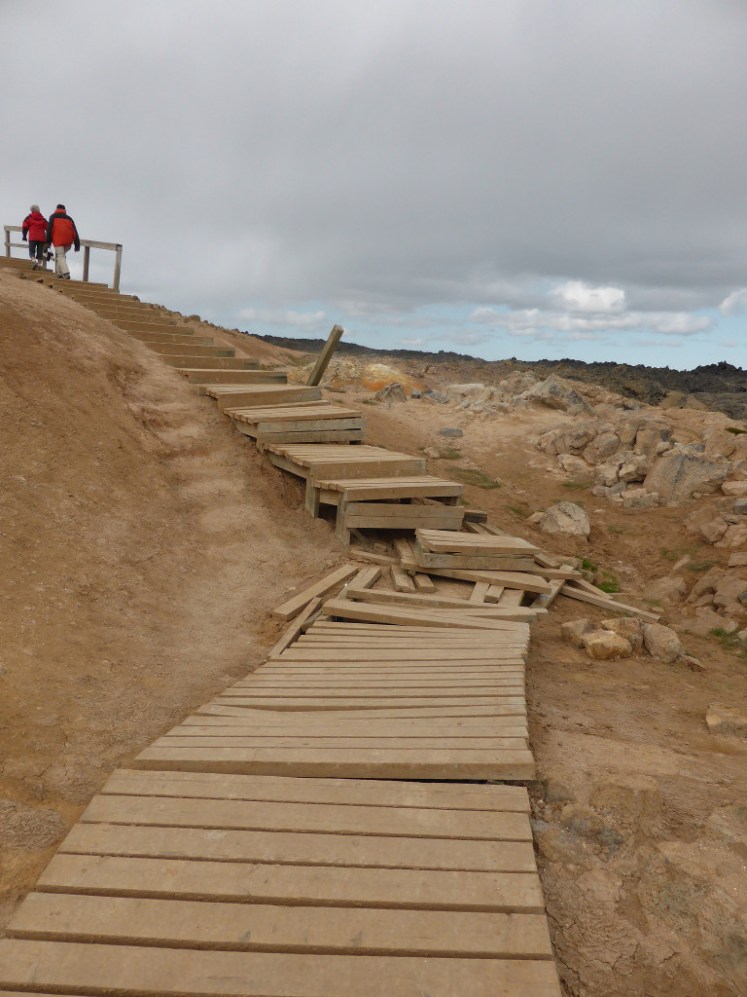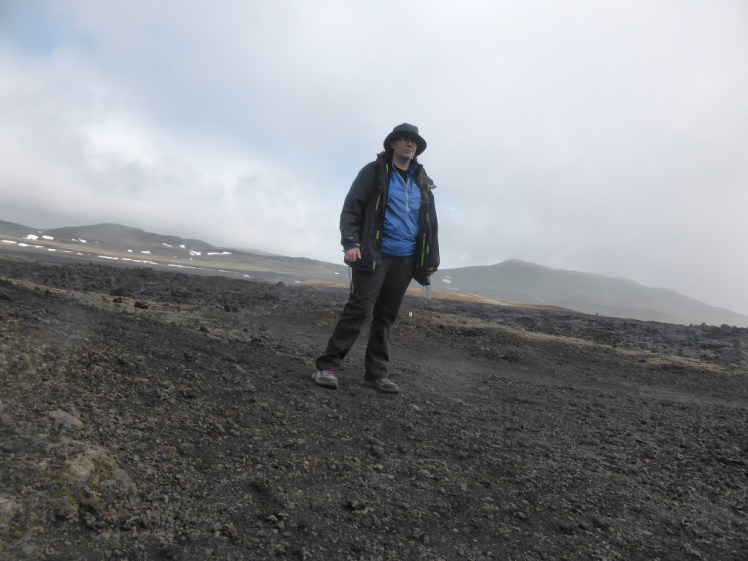In 2014, Iceland quietly had a massive volcanic eruption that lasted for six months. Hardly anyone outside Iceland heard of it because unlike when Eyjafjallajökull erupted, it didn’t affect anyone else. It was a fissure eruption up in the Highlands that poured lava and poisonous gases and fire fountains for six months and resulted in the biggest lava field since the Laki eruption of 1783 but it didn’t produce ash and it didn’t affect air travel, so mainland Europe remained oblivious to it. Watching the news and the updates online for six months (plus the month or two of rumbling and threatening beforehand) I found it all very exciting and it took eighteen months for cost, time and logistic to all combine in a way that allowed me to visit it.
While I was waiting, in the summer of 2015, I stumbled across Leirhnjúkur, site of the Krafla Fires, a series of fissure eruptions that happened between 1977 and 1984 and the lava is still fresh and steaming. It’s magical.
I was actually driving up past the Krafla Geothermal Power Plant just out of curiosity, with half a mind to go and look at Viti, a crater flooded with blue-green water and I happened to spy the signs to Leirhnjúkur. There was a car park and a path so I went to investigate.
First you cross the fields – nice bumpy fields, like bubblewrap made of lava and topped with moss, and then you follow a boardwalk, which is in less than perfect condition in places. At the top of the boardwalk is a little hot blue lake. Very pretty. I stood and looked at it and thought about learning to paint.



Aw, it’s a little baby natural Blue Lagoon! Not that I’d want to swim in it. I mean, it’s probably far too hot to swim in anyway and those grey and white and orange patches all around indicate huge heat and it’ll be all muddy and clay-ey and slimy on the bottom.

Idiot that I am, I thought the lake was the highlight here, the reason people were trekking across the fields in the drizzle. But no! The path went on and people went on and so, having nothing better to do, I followed.
Even as I walked up this lava, it still hadn’t clicked what I was about to see. Walking on lava is such an everyday occurrence in Iceland. It wasn’t until I reached the summit and looked at what lay before me that I realised I’m standing in a still-steaming lava field from an eruption that only stopped a year or so before I was born. This is fresh and new and still hot to the touch (I tested it. I chose a nice red patch of ground and laid my palm on it. I assure you, it’s hot. This is not a place where you want to be running around barefoot.)

Here in the foreground is lava that’s red in places and growing moss in places (although because it’s whitish I initially took that to be where it had got really hot, like charcoal on a barbecue) and behind it all is a jet-black lava field stretching out towards the mountains in the distance. It looks like the ruins of Therim Pel. For a volcano lover, being here, at Ground Zero of an eruption, is next best to being at Holahraun.


And surprise bonus of still-cooling rubbly lava field? Plenty of places to support a camera while you put the timer on and run away.

I enjoyed Leirhnjukur so much that I went back the very next year (and got a better timer selfie, actually). It’s very interesting being right there, right in a lava field, and such a fresh and evil-looking one, too. Holuhraun doesn’t steam like that, Holuhraun hasn’t left ash-white residue – this one almost seems fresher and newer despite being 30-odd years older. If you happen to be in the Myvatn area, do take a detour to Leirhnjukur.

One thought on “The Volcano Adventures – Leirhnjúkur”